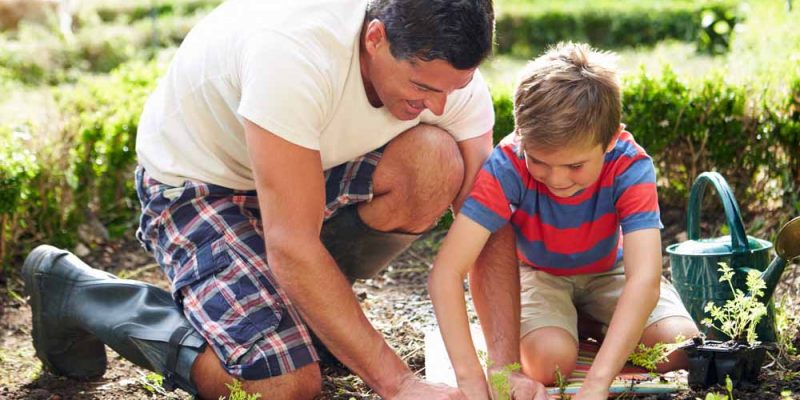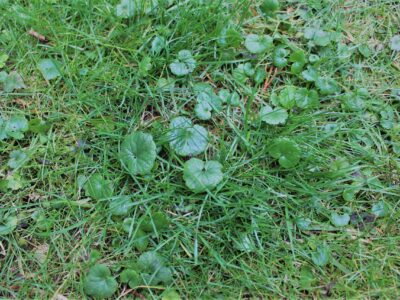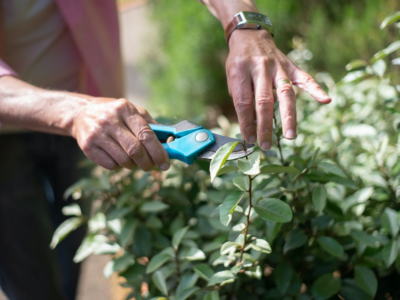There is hardly anyone who would say that spending time outdoors is harmful for children. In fact, mounting research shows that outdoor play is essential for children’s emotional, social, physical, and cognitive wellbeing. Being outdoors, children can practice unstructured play, experiment, develop their creativity, and learn how to cooperate and solve problems. Unstructured play offers a myriad of benefits but as outdoor activities go, gardening is one of the best ways to cultivate new skills and habits and give children a healthy start.
Benefits of Gardening with Children
Tackling landscaping and gardening projects strengthens kids’ interpersonal and emotional skills and enhances their fine motor development. Children learn perseverance, patience, and responsibility from caring for garden plants. They also learn how to handle disappointment when things don’t work out as expected.
The garden is like an outdoor classroom where children become more knowledgeable about all things living. They learn about the cycle of weather changes, plants, nutrition, and the circle of life. It is a great way to get kids involved with nature.
Planting with children, ordering from an online garden store also provides moderate exercise for parents and kids and increases the amount of vegetables and fruit that children eat. Gardening encourages kids to choose nutritious foods and brings a healthy body and mind. One study shows that students who are involved in building a garden and have lessons devoted to nature study consume 26 percent more fruit and vegetables.
Last but not least, gardening helps develop a sense of confidence and achievement. We all know that children who feel confident and capable value their abilities and themselves. They are more likely to succeed in school and more able to build positive relationships. Planting with children helps build exactly that sense of achievement, purpose, and success. The process of tending a plant and watching it grow takes patience, time, and effort but it also builds a sense of competence. It makes children believe they are more capable of doing things and achieving goals on their own. It feels like they have superpowers.
Top 3 Tips for Planting with Children
1. Safety in the Garden
The garden is a great environment for learning and fun. But to keep the experience safe, enjoyable, and positive for everyone, it is important to follow some basic guidelines and minimize the chance of illness and injuries.
When planting with children, especially young ones, make sure you secure all gates and fences. Store all chemicals, fertilizers, tools, and equipment in a secure place and out of reach of children. Encourage them to walk on pathways if available. With that in mind, instruct children what they can and cannot do in the garden and ensure adequate adult supervision.
Children should wear proper shoes and clothes while planting. Flip flops, sandals, and bare feet should not be allowed to avoid stings, cuts, and injuries. Kids should also wear sunscreen and hats, especially in hot weather.
2. Start with a Soil Test
While soil contamination usually occurs in urban areas, rural and suburban soils may also get contaminated by car exhaust drift, pesticides, herbicides, and lead paint residues. Starting with a soil test makes sense as it will help you to determine the health and fertility of your soil. These tests are generally affordable and can help you fix any safety and nutrient issues. They will also give you clues to potential hazards as children are especially vulnerable to chemicals and industrial contaminants.
Additionally, a soil test will show you the current acidity of soil so that you either make adjustments or choose plants that will perform best in your garden. Plants like blueberries, potatoes, peppers, and parsley perform well in acidic soil. Others require a mildly acidic soil, including tomatoes, winter squash, cucumbers, and carrots.
3. Get Kids Interested
To get kids interested in gardening, you need to give them their own space to grow fruits and vegetables. It doesn’t have to be big, a few pots or a large container will do. Provide correct-sized, lightweight equipment and tools that children can handle easily and safely.
You may also want to plant crops and flowers that attract interesting birds, insects, and butterflies. Flowers that attract butterflies the most are pot marigolds, daylily, cosmos, and coneflower. To attract songbirds and other wildlife, you can also plant cornflower, sunflower, and black-eyed Susan.
You can even set up a worm farm with your kids. Worms simply fascinate children which makes them ideal low-maintenance pets. Setting up a farm is a wonderful way to teach children sustainable practices in an interactive way. Keeping a worm farm will help you recycle food scraps and you can use the compost to fertilize the soil in your garden.
Top Crops to Plant with Your Children
As a rule, children like brightly colored, large vegetables and fruits that grow quickly. Such plants are, for example, carrots, tomatoes, cornflowers, and radishes. Consider plating fruits and vegetables with textual and sensory qualities as well. Kids love fragrant plants. The aromas given off by lavender, sweet peas, and jasmine are simply wonderful to enjoy.
Leaves vary from spiky to furry, from smooth to rough. Great sensory plants that you can use are bottlebrush species, aloe vera, and wooly lamb’s ear. When it comes to taste, there is a wealth of delicious fruits and vegetables, and it is hard to pick just a few. The choice of fruits and veggies to grow also depends on your child’s preferences. You can plant cherry tomatoes, carrots, peas, strawberries, and anything else that you like.
Planting with children is a fun, healthy activity for the whole family. Kids learn about nature and science and get a closer look at wildlife and many different plants, birds, and insects. Children also learn patience, responsibility, teamwork, and independence from gardening and growing their own food.














Comments